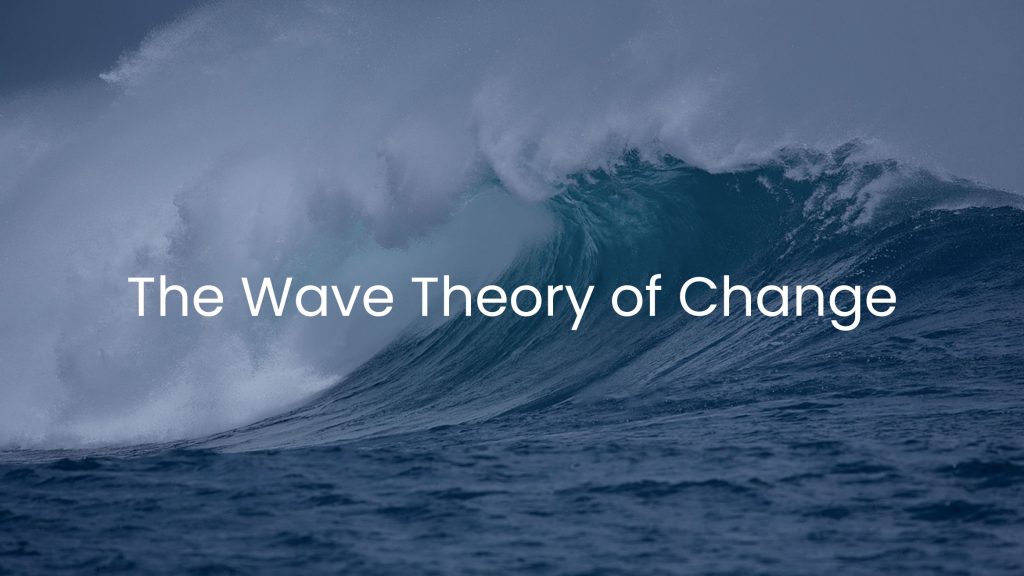|
Getting your Trinity Audio player ready...
|
Therefore, if anyone is in Christ, he is a new creation. The old has passed away; behold, the new has come (2 Corinthians 5:17, ESV).
It’s January at your gym.
There are lots of people there — many of them new. After eating too much turkey, stuffing, mashed potatoes, and drinking eggnog with a side of gingerbread cookies, they’ve lost their visions of sugar plums and need to shed fifteen pounds.
Despite great intentions, 80 percent won’t make it three months into their new fitness regimes. If you’re a gym regular, just be patient until March, when the crowds disappear, and your gym returns to normal.
Why? Let’s consider the Wave Theory of Change.
Change seldom occurs like a lazy river gently flowing with new ideas, nice and contained, within the banks and not causing disruption.
No, it’s more like a wave that builds in size and then explodes. But will things be ultimately different?
- A person knows a change must happen. It could be diet, exercise, or finding Jesus — hopefully all three.
- The person decides to change.
- After three to six months, this person is now comfortable with the change, and it becomes a sustainable routine.
Note that about 30 percent of the energy and resources required to make a change is used in deciding to change. The remaining 70 percent is consumed after the decision and change is actually made.
This explains why revivals have difficulty. An outreach organization comes to town and spends money and resources to prompt hundreds or thousands of decisions. But then the organization leaves — and invests nothing in the 70 percent required for those decisions to result in actual changed lives.
How about a person making a first-time decision to follow Jesus on a Sunday at church? This pre-follower of Jesus has spent 30 percent of their emotional energy in conviction before a spiritual change.
The decision is made, but then what?
Churches spend millions on buildings, staff, and programming to attract those desiring to make a decision. But what’s the expense afterward for the 70 percent of discipleship effort needed to stabilize newfound faith?
Now, back to the gym.
Realizing that most new members will not continue to come to the gym, fitness clubs have developed a business plan that assumes this lack of attendance. One major fitness chain has an average membership of about 6,000 but with gyms that average a 300-person occupancy rate.
This isn’t a good way for the church to operate.
One-to-one disciplemaking is God’s business plan for the church — and God is looking for 100 percent retention. Studies show that 70 to 80 percent of those deciding to follow Jesus walk away from faithfulness in the first 90 days. The “Wave Theory of Change” explains why.
Research also indicates that the best way to stem the flow of new believers leaving their newfound faith is one-to-one disciplemaking. This is why Jesus said to all of us, “Go and make disciples!”
This excerpt is adapted from my book Discipleship That Works, which can be purchased on Amazon. Just click the link and buy the book for yourself and dozens of your friends!

